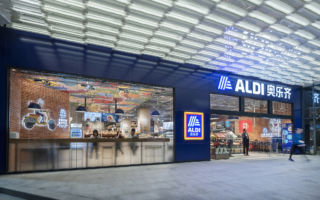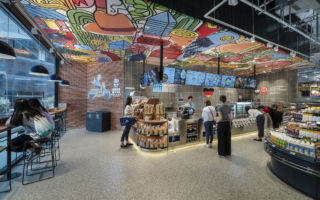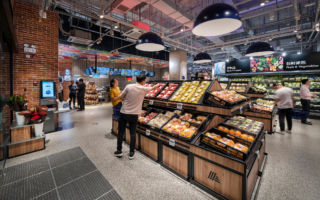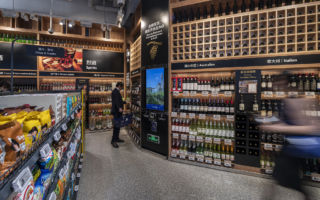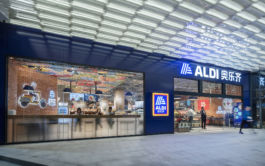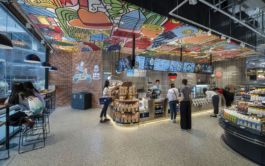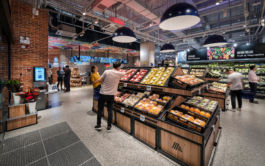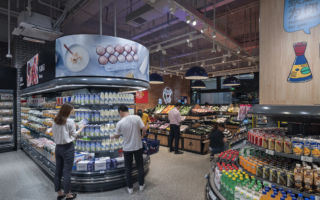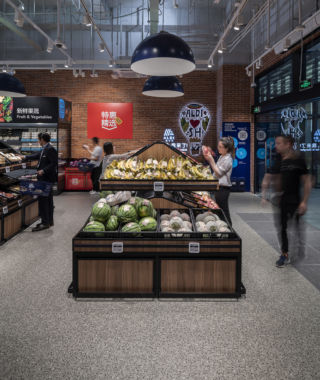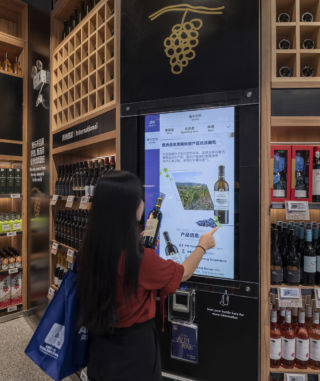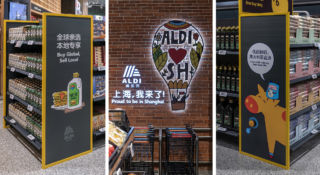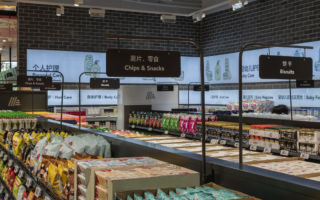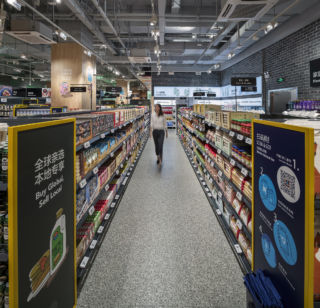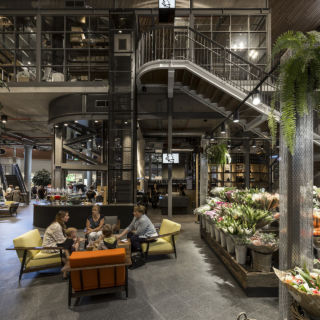Aldi, Shanghai
Location:
1st Floor, Block 8, No.1328 Yixian Road, Baoshan District, Shanghai, China
Design Credit:
Landini Associates
landiniassociates.com
Value retailer Aldi has entered the Chinese market with two pilot stores in Shanghai. The launch follows two years selling online, which has allowed them to test the market’s receptiveness to their brand.
The smaller format stores are located in densely populated catchment residential and office areas, and are positioned as ‘neighbourhood grocery stores’, reflecting the Chinese consumer’s preference to make more frequent, smaller shops each week.
The retailer is taking advantage of the Chinese appreciation of imported goods, this has allowed them to premiumise their positioning and their retail concept accordingly, which they have done with the help of one of the world’s leading retail design consultancies, Landini.
To complement the upscaled store design, the consultancy has created an extensive series of market-specific messaging and graphic illustrations which help Aldi communicate and reinforce their brand values – product freshness, value, quality and trustworthiness.
Further localising their offer, the retailer extended their Aldi own-brand range to include some Chinese favourites, as well as some inventive Chino-German combinations such as a ‘Berlin Bao’ a traditional Chinese steamed bun filled with sausage and sauerkraut. These and other ‘take-away’ items can be eaten in the on-site ‘food station’ – a first for the retailer.
Aldi has spent years studying the Chinese grocery retail market to understand how best to enter the market in a thoughtful and strategic way
Their localised concept features a number of other elements new to Aldi and the discount grocery market, including a wine experience, where customers scan bottles to learn more about the provenance and tasting notes of each wine, and a showcase of online-only premium beauty items which can be instantly purchased by scanning the QR code.
Aldi launched ‘Scan and Go’ in conjunction with WeChat giving Chinese tech-savvy customers the choice to skip the usual checkout and they are also using the online payment platform to offer instant delivery within 3km of the store. In another first, customers can access offers and benefits by becoming an Aldi member, showing the retailer’s strategy to collect shopper data, which will inform the future rollout of the concept in China.
With their focus on fresh produce, the inclusion of hospitality and the adoption of mobile-pay, Aldi is clearly changing its strategy and making a ‘push for posh’ in China. Could this be the future norm of discount supermarket retailing?
